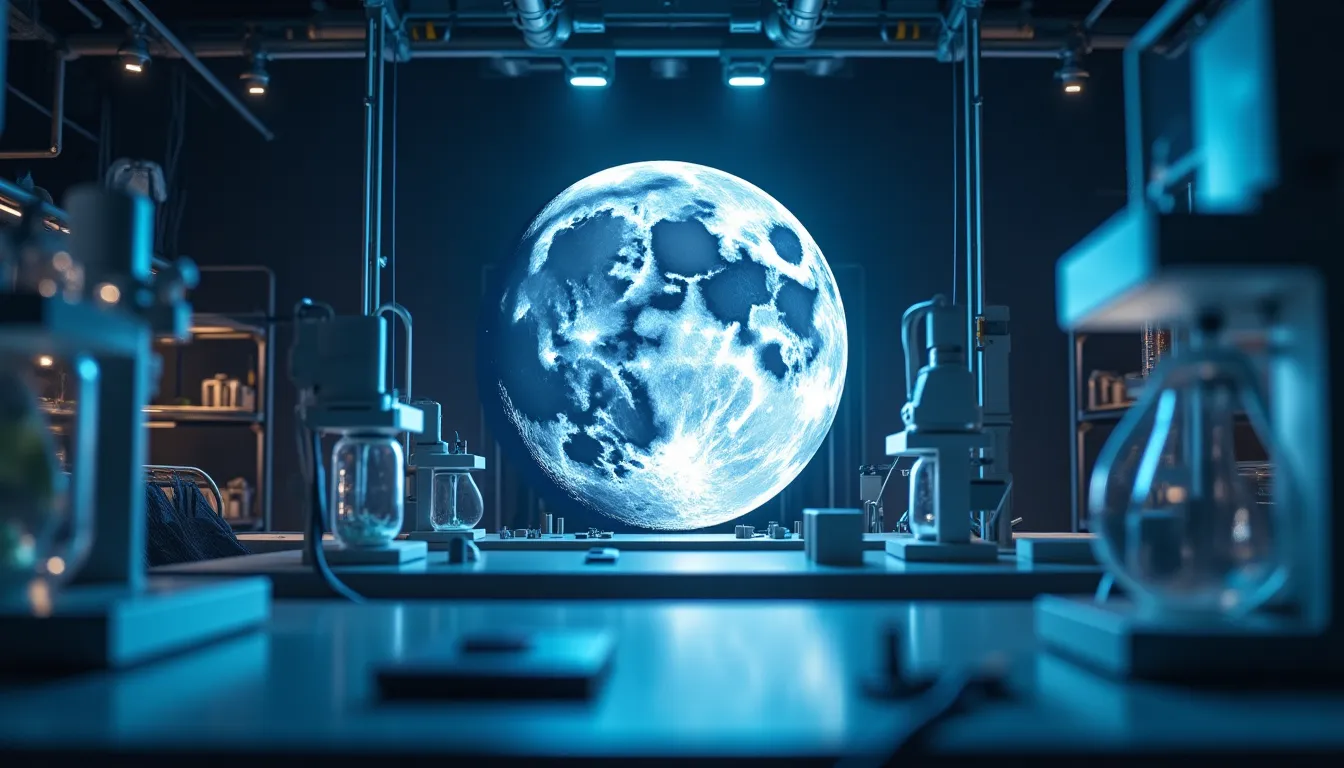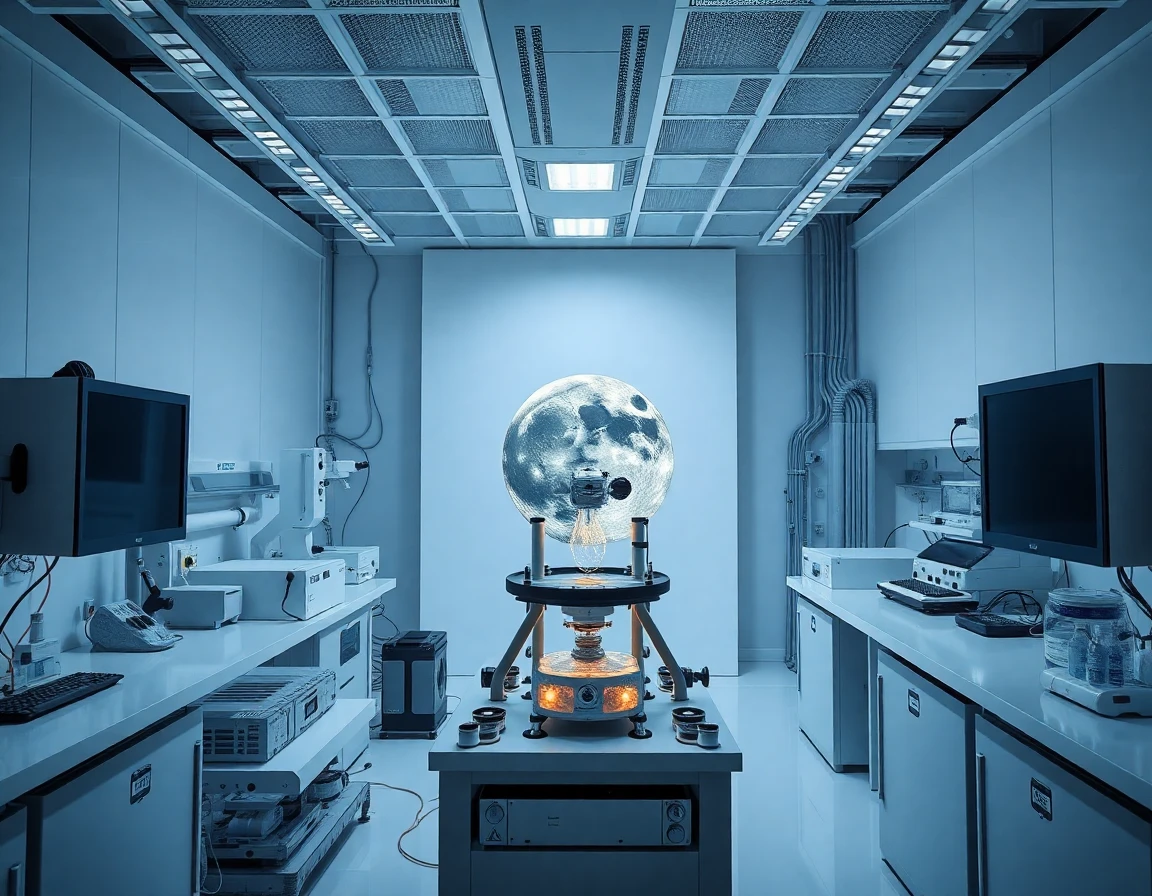As interest in space exploration surges, researchers and industry leaders are increasingly focusing on the technical and economic feasibility of lunar mining. This emerging sector promises to revolutionize resource extraction, not just for Earth but for future space missions. With the Moon’s abundant resources, including water ice and rare minerals, lunar mining could pave the way for a sustainable presence on the Moon and beyond.
Understanding Lunar Mining
Lunar mining refers to the extraction of resources from the Moon’s surface. With a composition rich in essential materials such as helium-3, rare earth elements, and water ice, the Moon presents a unique opportunity for resource utilization. Helium-3, a potential fuel for nuclear fusion, could provide a nearly limitless source of energy, while water ice could be converted into hydrogen and oxygen for rocket fuel, essential for future deep-space missions.
Current Research and Feasibility Studies
Recent studies have focused on the technical challenges associated with lunar mining. According to Dr. Emily Tan, a leading researcher at the Lunar Resources Institute, “The feasibility of lunar mining hinges on our ability to develop efficient extraction and processing technologies. We need to explore methods that minimize costs and maximize yield.”
Technical Challenges and Innovations
One of the primary technical challenges is the harsh lunar environment. Dust particles on the Moon are abrasive and can damage equipment, making durability a key factor in machinery design. To address this, companies like Astrobotic Technology are developing robust lunar rovers equipped with advanced dust-resistant materials and automated systems for resource extraction.
Additionally, the transportation of materials from the Moon to Earth poses another significant challenge. Current projections estimate that transporting lunar resources back to Earth could cost upwards of $10,000 per kilogram. Therefore, in-situ resource utilization (ISRU) is critical. This involves using lunar materials to support human activities on the Moon itself, thereby reducing dependency on Earth-based supplies.
Economic Viability
The economic feasibility of lunar mining is closely tied to the market demand for Moon-sourced materials. According to a report by the European Space Agency, the global demand for rare earth elements is expected to increase due to their applications in electronics, renewable energy, and defense technologies. “If we can establish a reliable supply chain for these materials from the Moon, we could see a new era in resource management,” said Dr. John Miller, an economist specializing in space resources.
Potential Impacts of Lunar Mining
The implications of lunar mining extend beyond economic benefits. If executed responsibly, lunar mining could significantly reduce the environmental impact of terrestrial mining operations. Moreover, it could also catalyze advancements in space technology, leading to innovations that could benefit industries on Earth.
International Collaboration and Policy Considerations
As nations and private companies race to stake their claims on lunar resources, international collaboration and regulatory frameworks will be crucial. The Outer Space Treaty of 1967 provides a foundational legal structure, but it is often viewed as outdated in the context of current developments in space exploration. Policymakers are urged to develop new agreements that ensure equitable access to lunar resources and protect the Moon from potential over-exploitation.
Future Developments in Lunar Mining Technologies
Several technologies are on the horizon that could transform lunar mining practices. For instance, the development of autonomous mining robots is gaining traction. These robots would be capable of operating in the Moon’s harsh conditions, performing tasks such as extracting ice or minerals without needing constant human oversight.
Furthermore, advancements in 3D printing technology may allow for the construction of habitats and equipment using lunar materials, reducing the need to transport heavy equipment from Earth. Companies like ICON are leading the charge in 3D printing technologies that could be adapted for lunar construction.
Conclusion: The Road Ahead
In conclusion, lunar mining represents a frontier ripe with possibilities, offering the potential for economic growth, technological advancement, and sustainable resource management. As research progresses and technology evolves, the vision of a thriving lunar mining industry becomes increasingly attainable. The next decade will be crucial in determining how humanity harnesses the Moon’s resources and, ultimately, whether lunar mining will become a reality.
As Dr. Tan aptly summarizes, “We stand at the threshold of a new era in space exploration. The Moon is our next great frontier, and the opportunities it presents are boundless.”
Related Technologies
- Lunar Rovers: Essential for navigating the lunar surface and conducting mining operations.
- ISRU Technologies: Techniques for utilizing lunar resources on-site.
- 3D Printing: Potential for creating structures and tools from lunar materials.
This journey into lunar mining not only holds promise for space exploration but also redefines our relationship with resources on Earth. As we look to the stars, the Moon could very well be the key to unlocking a sustainable future both in space and on our home planet.



